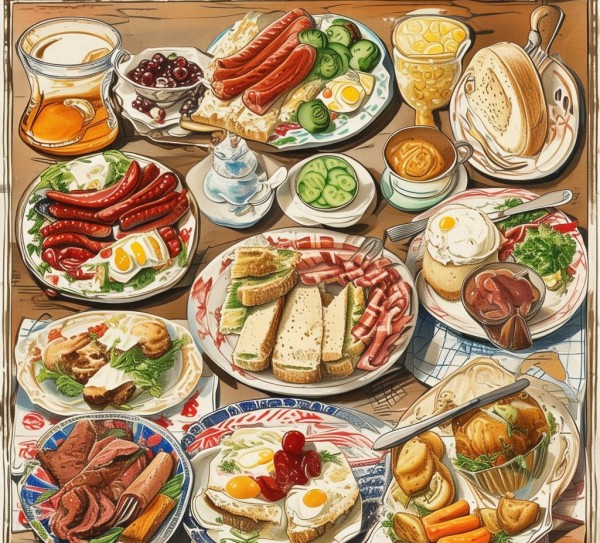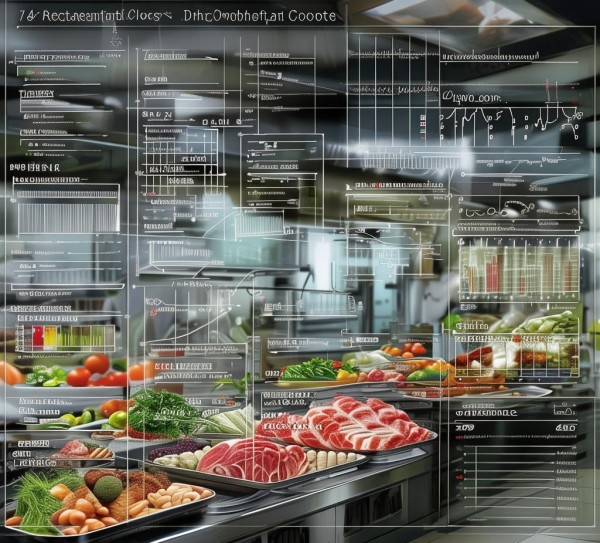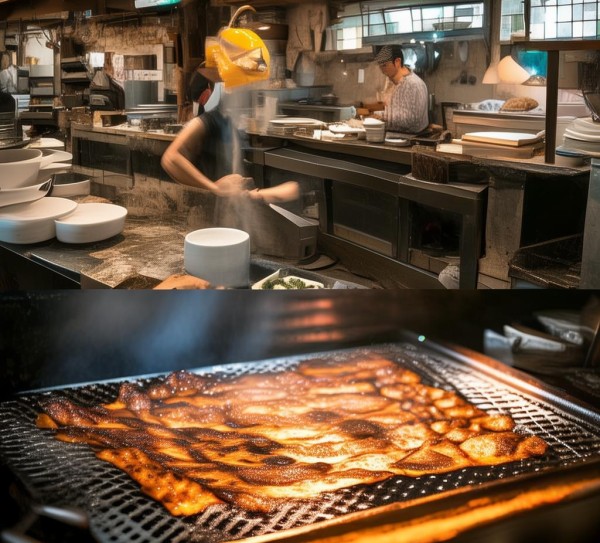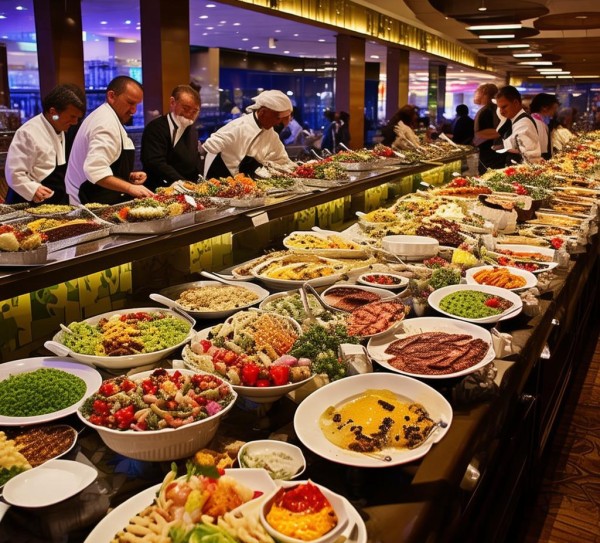This article delves into the daily diet of the British, exploring the components of their traditional三餐: breakfast, lunch, and dinner. It provides a description of typical dishes and food choices, offering insights into the English culinary habits and cultural eating patterns.
In the United Kingdom, the culinary tapestry woven from generations of culinary tradition is characterized by a symphony of flavors and robust dishes that have stood the test of time. Grasping the nuances of describing the quintessential British meals—breakfast, lunch, and dinner—can be both enlightening and captivating for anyone intrigued by the gastronomic customs of the British populace. Let's delve into a detailed exploration of how to articulate each mealtime in English.

Breakfast: The Grandeur of the Full English Breakfast
The morning in the UK typically unfurls with a satisfying repast known as the "Full English Breakfast." This meal, a veritable feast, encompasses the following elements:
- Fried Bacon: Thin slices of bacon, fried to a golden crisp.
- Sausages: Cured and oked pork sausages, often served in a freshly baked roll.
- Scrambled Eggs: Eggs cooked to a creamy texture, seasoned with a touch of cream or butter.
- Poached Eggs: Eggs gently poached in water infused with vinegar, resulting in a delicate, runny yolk.
- Baked Beans: Beans simmered with tomatoes, a sprinkle of sugar, and a blend of spices.
- Tomatoes: Freshly sliced tomatoes, seasoned with a dash of salt and pepper.
- Black Pudding: A distinctive blood sausage, composed of blood, oatmeal, and a medley of spices.
- Bread: Served either toasted or untoasted, often accompanied by a generous spread of butter.
- Marmalade or Jam: A sweet, tangy spread made from the zest and juice of citrus fruits, often spread on toast.
In English, the Full English Breakfast might be described as follows:
"The Full English Breakfast is a quintessential British meal, replete with fried bacon, sausages, scrambled or poached eggs, baked beans, tomatoes, black pudding, and toast, often complemented by a generous dollop of marmalade or jam."
Lunch: The Delicate Interlude
Lunch in the UK is typically a more subdued affair, with offerings that can vary widely based on the season and location. Common lunchtime selections include:
- Sandwiches: A staple, ranging from the classic "Buttercup" or "Full Monty," which are filled with an assortment of fillings such as ham, cheese, and lettuce.
- Pasta: Simpler pasta dishes like spaghetti Bolognese or a vibrant tomato and basil pasta salad.
- Salads: Fresh, colorful salads featuring a variety of greens, vegetables, and a choice of dressings.
- Fish and Chips: Crispy, deep-fried fish served alongside golden-brown chips (potato fries), often garnished with peas and a side of tartar sauce.
To describe a typical lunch in English, one might say:
"Lunch in the UK is generally a more relaxed meal, featuring popular dishes such as sandwiches, pasta, salads, or the classic fish and chips."
Dinner: The Grand Evening Banquet
Dinner in the UK is the cornerstone of the day's dining experience, particularly in the evening. Common dinner offerings include:
- Roast Dinner: A traditional British feast that showcases roast beef, accompanied by roasted potatoes, carrots, Brussels sprouts, and a savory gravy.
- Shepherd's Pie: A hearty pie filled with minced meat, onions, and vegetables, topped with a generous layer of mashed potatoes.
- Puddings: A delightful array of sweet treats, including custard, ice cream, or the famous "Christmas Pudding," often served with brandy butter.
- Sauces: Complementary condiments such as mint sauce, HP sauce, or brown sauce, which are often served alongside meat dishes.
Here's how one might describe a traditional dinner in English:
"The main meal of the day in the UK is dinner, often featuring a sumptuous roast dinner with roast beef, potatoes, and vegetables, or a comforting shepherd's pie. Puddings and an assortment of sauces are also commonly enjoyed, particularly during festive gatherings."
Cultural Insights
When describing British meals in English, it's essential to acknowledge the regional variations and personal tastes. For instance, in Scotland, haggis may be a staple, while in Wales, Welsh rarebit is more prevalent. Additionally, the term "tea" in the UK can refer to any meal, not just the beverage, which can be confusing for those unfamiliar with British vernacular.
In summary, capturing the essence of the British三餐 in English requires an understanding of the traditional dishes and their components. Whether it's the robust Full English Breakfast, the light-hearted lunch, or the grand dinner, each mealtime is a testament to the rich culinary legacy of the United Kingdom.








